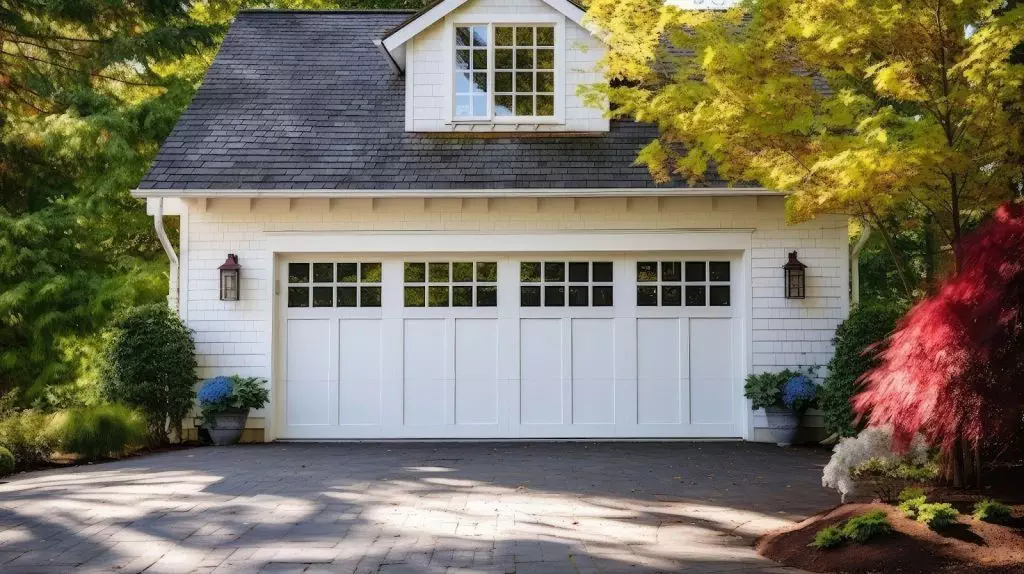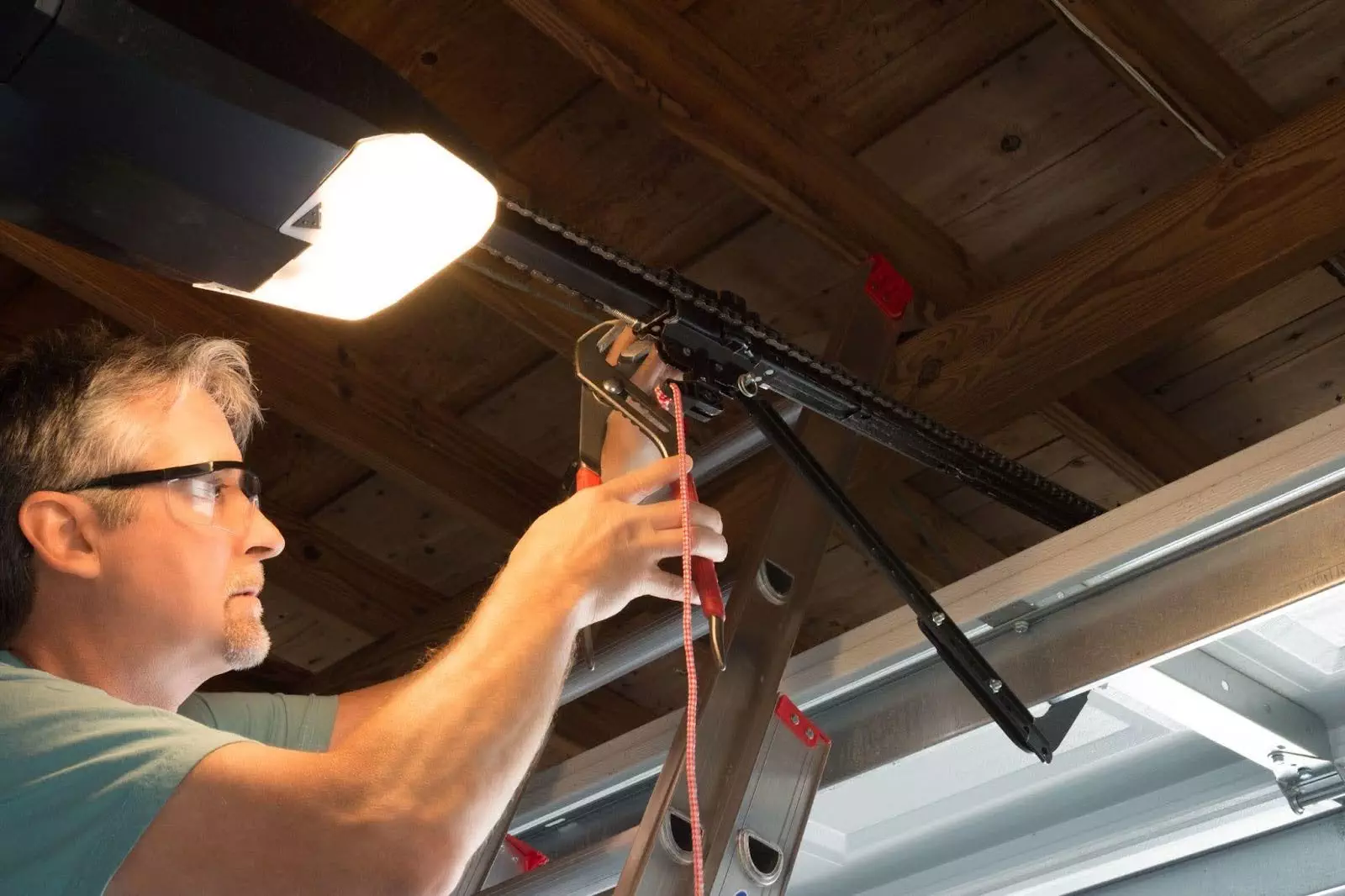Your overhead garage door works hard every day, and regular maintenance keeps it running smoothly and efficiently. However, daily use, exposure to the elements, and natural wear quickly take a toll on your garage door’s performance.
Without proper care, minor problems grow into costly repairs or even complete door failure. Regular maintenance extends the life of your garage door and ensures it operates safely and quietly.
This blog provides simple, practical tips for maintaining your overhead garage door. Whether you prefer DIY fixes or want to stay ahead of common issues, these tips will help you avoid problems, save money, and enjoy hassle-free operation all year.
Perform regular visual inspections
Regular visual inspections help keep your garage door running smoothly. Start by examining the springs, cables, and rollers for wear and tear. They are likely close to failure if you notice stretched, frayed, or rusted springs.
Similarly, frayed or worn cables may snap under tension, creating a serious safety risk. Ensure the rollers glide smoothly along the tracks, and check for cracks, rust, or excessive wear that could cause noisy or jerky movements.
Next, check the tracks for rust, cracks, or misalignment. Rust or bends can cause the door to grind or get stuck. Ensure the tracks are straight and clear of obstructions to keep the door moving smoothly. If you spot dents or bends, contact a professional to prevent more severe damage.
Finally, inspect the weather stripping at the bottom and sides of the door. Worn or damaged weather stripping lets in drafts, moisture, and pests, reducing your garage’s comfort and energy efficiency. If you notice gaps, cracks, or wear, replace the weather stripping promptly to keep a tight seal and protect your garage from the elements.
Lubricate moving parts
Lubricating your garage door’s moving parts is essential for smooth, quiet operation and preventing unnecessary wear. Focus on critical areas like the hinges, which prevent squeaking, and the rollers, which ensure seamless door movement.
While you don’t need to lubricate the tracks, keep them clean for optimal performance. Also, you should apply lubricant to the springs to reduce strain and improve quiet operation.
Use silicone-based spray or white lithium grease for long-lasting lubrication, and avoid WD-40, which is a degreaser. Lubricate these parts every six months or more frequently in extreme conditions.
Test the balance of the garage door
When your door is off-balance, it puts unnecessary strain on the garage door opener, forcing it to work harder each time you open or close the door. This extra effort accelerates wear on the opener and other components, leading to premature breakdowns.
An unbalanced door also creates safety risks, as it may fall unexpectedly or move unevenly, increasing the likelihood of accidents or damage.
Regularly checking and correcting the door’s balance ensures smoother operation, prolongs the life of your system, and helps prevent costly repairs or safety hazards.
How to check the balance:
- Close the door entirely.
- Disconnect the opener using the emergency release cord.
- Lift the door halfway — if balanced, it should stay in place.
- If the door feels heavy or slams shut, it’s unbalanced.
If the door is off-balance, contact a professional. Adjusting the springs is dangerous, so an expert should do it.

Tighten hardware regularly
Loose bolts and brackets can affect your garage door’s performance and lead to various issues. When these critical components loosen, the door may shake, rattle, or move unevenly, causing jerky or noisy operation.
These vibrations become more than an annoyance — they also increase wear on other parts of the door system, such as the rollers, tracks, and opener, which rely on secure hardware for smooth functioning. If left unchecked, these minor issues often snowball into much larger problems.
For instance, the extra strain on the garage door opener could cause it to burn out faster, or the uneven weight distribution might damage the door panels or misalign the tracks. This impacts the door’s efficiency and significantly increases the risk of sudden failures or malfunctions, leading to costly repairs or even a total replacement.
Key areas to check:
- Hinges that connect door panels
- Brackets attaching the door to the tracks
- Roller mounts that secure the rollers
Use a socket wrench to tighten bolts, ensuring they’re secure but not overtightened to avoid damage, which could compromise the door’s stability.
Clean and maintain the tracks
Dirt, dust, and debris quickly build up in your garage door tracks, disrupting the door’s smooth movement. Over time, this buildup causes friction, making the door grind, squeak, or even get stuck while opening or closing.
Ignoring this simple maintenance step may lead to more significant issues, as debris-packed tracks put extra strain on the rollers, motor, and other moving parts.
Step-by-step guide to cleaning the tracks
Start by disconnecting the opener
For safety, pull the emergency release cord to disconnect the door from the automatic opener.
Clear out visible debris
Use a broom or a soft brush to remove dirt, leaves, or any obvious debris along the tracks. Make sure to clear both vertical and horizontal tracks.
Wipe down the tracks
Take a damp cloth and wipe down the inside of the tracks to remove dust and finer particles. If sticky residue remains, use a mild household cleaner to remove it.
Scrub stubborn grime
For more difficult grime, grab a soft-bristle brush or old toothbrush and scrub away the buildup.
Dry the tracks
Use a clean, dry cloth to ensure no moisture remains in the tracks, as this could lead to rust.
Inspect for alignment issues
Once the tracks are clean, inspect them for dents, bends, or misalignments. A track out of alignment can cause serious problems, such as making the door shift or jam during operation.
Importance of inspecting tracks for dents or bends
While cleaning the tracks, look closely for dents or bends that might interfere with the door’s operation. Even small misalignments can cause the door to wobble or get stuck.
Call a professional technician to repair or realign the tracks if you notice any significant dents or bends. Ignoring these issues may lead to more significant problems, like damaging the rollers or the opener.
Test the safety features
Ensuring your garage door’s safety features, especially the auto-reverse function, protects your family, pets, and property. Regularly check and clean the sensors to keep the door operating safely.
How to test the auto-reverse
Fully open the door, place an object like a piece of wood in its path, and close the door. If it doesn’t reverse upon contact, call a professional.
Sensor alignment and cleaning
Wipe sensors with a soft cloth to remove debris and ensure they face each other directly. Proper alignment is critical for correct function.
Resetting sensors
Check the power, adjust the sensors until their indicator lights are steady, and tighten any loose brackets. Test the door after realignment.
Replace weather stripping as needed
Weather stripping keeps your garage insulated, blocking drafts, moisture, and pests while reducing energy bills by easing the load on your HVAC system.
Replace weather stripping if you notice cracks, gaps, brittleness, or daylight peeking through. Drafts or peeling material also signal the need for replacement.
How to replace
Measure the garage door for new weather stripping. Remove old strips, clean the area, and cut the new stripping to fit. Install bottom seals by sliding them into the track, and secure side strips with nails or staples.
After installation, check for gaps to ensure a proper seal.
Replacing weather stripping improves insulation, energy efficiency, and protection, offering long-term comfort and savings.
Schedule professional maintenance annually
Scheduling annual professional maintenance for your garage door keeps it running smoothly and helps you avoid costly surprises. When a trained technician inspects and services your door, they ensure everything works efficiently and catch potential problems before they escalate into expensive repairs.
A yearly tune-up saves you time, money, and stress. Professionals have the skills to spot small issues that might seem insignificant but could cause significant problems down the road. Regular maintenance keeps your door balanced, well-lubricated, and in top condition. A well-maintained door operates more quietly, lasts longer, and gives you peace of mind knowing it’s safe and secure.
What professionals check for
During an inspection, technicians focus on key areas that affect your door’s performance and safety. They check spring tension to ensure the springs aren’t overstressed or too loose, which could lead to dangerous breakages.
They inspect cables for signs of wear, looking for fraying or weakening that might cause the cables to snap. They also check alignment, ensuring the door opens and closes smoothly without straining the tracks or garage door opener.
Technicians lubricate moving parts, tighten hardware, and test the safety features to ensure everything functions properly.
By catching issues early, professionals help you avoid expensive repairs. A loose bolt, worn-out spring, or misaligned track might seem minor, but they can lead to major breakdowns if left unaddressed.
Regular maintenance keeps your door functioning efficiently and prevents emergency repairs, saving you money in the long run. It also extends the life of your garage door, giving you more value for your investment.

A-1 Garage Door Repair — total care for your overhead garage door
When it comes to professional maintenance, A-1 Garage Door Repair is your trusted partner. Our skilled technicians provide thorough inspections, expert repairs, and reliable tune-ups to keep your garage door in top shape.
Whether you need a yearly tune-up or immediate assistance with a malfunction, we always deliver prompt, high-quality service. Contact A-1 Garage Door Repair today to schedule your maintenance and keep your garage door operating at its best for years to come!

